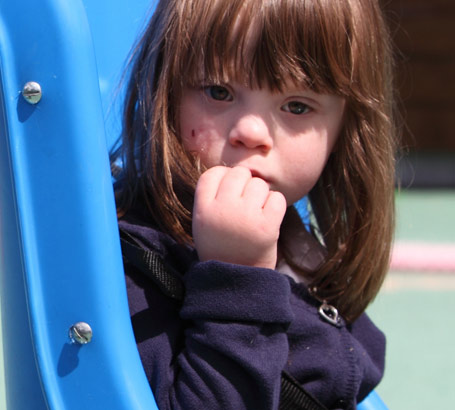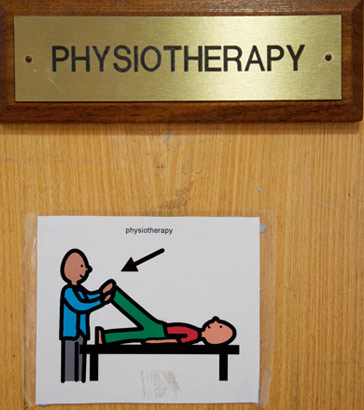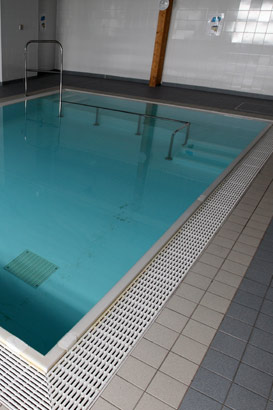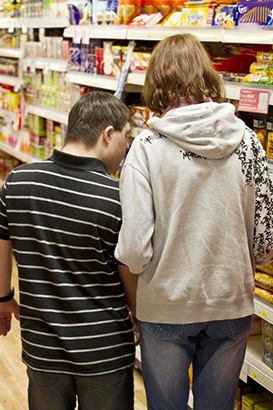
The dignity of children and young people requires that staff ensure they are clean and comfortable throughout the school day. It is also helpful to recognise that the physical appearance of their child is often extremely important to parents/carers.
Most families, when asked, will supply spare clothes for changes during the day and these should always be used in preference to school 'emergency' spare items.

Dignity in dressing and bathing impacts socially. The way children and young people appear to others is also important, and can affect relationships.
Odour should be managed, and dress should not only reflect personal choice, but also be appropriate – for age, gender, culture and religion, as well as for environmental conditions.
Bathing and dressing offers opportunities for choice not only of clothes, but of toiletries, hair styles and accessories (eg hair slides, jewellery).

Dressing is a complex process involving a range of skills:
- Awareness of a 'body map' and where the body is in space.
- Motor skills: moving limbs; reaching, grasping and releasing clothes.
- Balance and co-ordination.
- Sensation (tactile, proprioception, perception and vision).
- Memory (verbal and visual).
- Reasoning ability (eg ability to sequence, select appropriate clothing, etc.)
- Comprehension of language.
(Northumberland Children's Occupational Therapy Service, undated & 2009; Walker, 1991)

Dressing independently can give a sense of dignity, self-respect and achievement. There should be a clear plan for supporting dressing/undressing for children and young people who need this, and an appropriate environment.
Professionals involved may include the school nurse, a physiotherapist and an occupational therapist.
To support dressing/undressing, the occupational therapist and physiotherapist will carry out a dressing assessment, and develop a dressing protocol and programme for the child or young person, including strategies for increasing independence.

The following strategies may increase children and young people's independence and ease in dressing/undressing.
- Elasticated waists.
- Shoes that don't need laces tying (eg slip-on, Velcro fastenings, spiral laces, etc.)
- Loose clothing with wide openings.
- Larger buttons and buttonholes or 'false buttons' on top of Velcro fasteners.
- Short tubular sports socks without heels.
- Clothes with an obvious back or front.
- Short sleeves instead of long sleeves.
- Loops attached to zips.
Further advice is available in the Northumberland Children's Occupational Therapy Service information sheets (Undated; 2009).

School uniform codes should accommodate the needs of those with complex health difficulties (eg styles, specialist shoes, clothes that are comfortable and preserve modesty in different positions).
Your school will have policies and procedures for preserving privacy and dignity in undressing and dressing pupils who require full support and support for individual children will be in their health care plan.
Policies may include:
- Intimate Care Policy.
- Moving and Handling Policy.
- Safeguarding Policy.
- Health and Safety Policy.

- Be familiar with the facilities available and the resources needed to support children and young people's safety.
- Plan ahead to ensure privacy and modesty (eg separate male and female changing areas).
- Is the environment suitable (eg enough space for wheelchairs, warm enough for children and young people with complex health needs)?
- Ensure all staff are aware of relevant policy, protocols and risk assessments.
- Ensure relevant paperwork is taken, and contingency plans are in place.
- Allow enough time to support dressing/undressing.

Read these documents on bathing and changing.
Think about any additions you could make to the checklist.
Thinking of a child or young person you work with, draw up a detailed personalised checklist for washing and changing, stating exactly what happens and how. List any supporting documents you need.
Are there any changes you could make to improve privacy and dignity in washing and changing for the child or young person?

Northumberland Children's Occupational Therapy Service (Undated) Dressing techniques for children with a hemiplegia.
Northumberland Children's Occupational Therapy Service (2009) Dressing skills.
Royal College of Nursing (2008) Defending Dignity: Challenges and opportunities for nursing. London: Royal College of Nursing.
The Highland Council Integrated Children's Services (2009) Intimate care for children and young people: policy and guidance.
Walker, M.E. (1991) Dressing after Stroke. Nottingham: University of Nottingham.